
Cover of 5 pages (includes this cover by Reed Waller) - This is Reed Waller's comic strip introduction to the idea of a 'funny animal' cartoonist art-centered apa (Amateur Press Association) (a co-operative zine-style publication, distributed to a semi-restricted membership).
"Join the Funny Animals Liberation Front! Join VOOTIE the apa of funny animals fandom!"
This pre-publication flyer was sent out to recruit cartoonists to become starting members of the start-up zine. It also included information on how to contribute pages to a 'proof of concept' example: Vootie #0. Vootie #0 would be shown or distributed to other potential contributors.) Deadline for contributions for Vootie #0 was 7 April 1976, with assembled copies to be mailed out after. A date for contributing to Vootie #1 would be published in Vootie #0.
Reed had designed and printed this cover, and brought it to a 29 February 1976 work session with Ken Fletcher. That afternoon, 4 additional pages for this promotional flyer were written & then printed on a small office copier. Those pages added more background & production details for potential contributors.
This single-page flyer was also posted on its own at various science fiction and comic book conventions in the coming years, and hand-distributed to interested fan-cartoonists.
Art & Text by Reed Waller. Published on 29 February 1976. Printed offset black ink on white paper. First print-run of this flyer-page approximately 100 copies. Posted with permission of the contributors.
"Join the Funny Animals Liberation Front! Join VOOTIE the apa of funny animals fandom!"
This pre-publication flyer was sent out to recruit cartoonists to become starting members of the start-up zine. It also included information on how to contribute pages to a 'proof of concept' example: Vootie #0. Vootie #0 would be shown or distributed to other potential contributors.) Deadline for contributions for Vootie #0 was 7 April 1976, with assembled copies to be mailed out after. A date for contributing to Vootie #1 would be published in Vootie #0.
Reed had designed and printed this cover, and brought it to a 29 February 1976 work session with Ken Fletcher. That afternoon, 4 additional pages for this promotional flyer were written & then printed on a small office copier. Those pages added more background & production details for potential contributors.
This single-page flyer was also posted on its own at various science fiction and comic book conventions in the coming years, and hand-distributed to interested fan-cartoonists.
Art & Text by Reed Waller. Published on 29 February 1976. Printed offset black ink on white paper. First print-run of this flyer-page approximately 100 copies. Posted with permission of the contributors.
Category All / All
Species Unspecified / Any
Size 912 x 1200px
File Size 400.7 kB
Listed in Folders
At the time, we were doing a "cartooning-art" zine. There were many artists and comic book artists in the pre-existing science fiction fandom and comic book fandom. The zines for those fandoms would publish many serious sf illustrations or superhero art. There were quite a few zines that wanted those type of illustrations, if the artists would search them out. By the 1970s there were many zines and artists doing fan art in those categories.
Art-zines were unusual at that time. There were fanzines done that were mostly original superhero comic strips.
We were interested in 'funny animals' as something that should be produced 'by adults, for adults'. We knew from experience that if we had opened a co-op art-zine without the 'no humans' restriction, we would have been overwhelmed with trademarked corporate superhero fan art (or even original-character human superhero fan art). We would also have received many sf future illustrations with humans in space-fleet uniforms meeting a furry alien blob. All that could have been good, but that was not what we wanted to publish.
At the time, it was a neglected category of cartooning by fan artists. The 'band-width' was narrow, as it was printed pages.
We were extreme in posting the "no-humans" warning signs. We figured that if we didn't, they wouldn(It didn't matter, because cartoonists being cartoonists, many of the cartoonists would sometimes work hard to have suspiciously human-looking characters in their contributions anyway....)
Art-zines were unusual at that time. There were fanzines done that were mostly original superhero comic strips.
We were interested in 'funny animals' as something that should be produced 'by adults, for adults'. We knew from experience that if we had opened a co-op art-zine without the 'no humans' restriction, we would have been overwhelmed with trademarked corporate superhero fan art (or even original-character human superhero fan art). We would also have received many sf future illustrations with humans in space-fleet uniforms meeting a furry alien blob. All that could have been good, but that was not what we wanted to publish.
At the time, it was a neglected category of cartooning by fan artists. The 'band-width' was narrow, as it was printed pages.
We were extreme in posting the "no-humans" warning signs. We figured that if we didn't, they wouldn(It didn't matter, because cartoonists being cartoonists, many of the cartoonists would sometimes work hard to have suspiciously human-looking characters in their contributions anyway....)
Heh. We're not quite this picky on Inkbunny, but close, and for similar legal-related reasons - plus bandwidth still needs funding, even if it's cheaper now. Let human-fans pay for the humans!
Yes. In 40 years the cultural and legal landscape has evolved to where any formal or informal organization has to be aware of legal traps and pitfalls.
In the USA and English-speaking countries, there were a series of court cases (usually featuring the stories of "Omaha, the Cat Dancer") that continued to legally find that while Omaha was a comic strip story, it was also legally protected art/literature (intended for adults), and also that it was not 'bestiality'. (To the disappointment of a few low magistrates and police officers.)
But there is always the possibility at new attempts to challenge the reality of fantasy.
And yes, archives with categories should be allowed their categories... or at least a courtesy towards the collective themes.
In the USA and English-speaking countries, there were a series of court cases (usually featuring the stories of "Omaha, the Cat Dancer") that continued to legally find that while Omaha was a comic strip story, it was also legally protected art/literature (intended for adults), and also that it was not 'bestiality'. (To the disappointment of a few low magistrates and police officers.)
But there is always the possibility at new attempts to challenge the reality of fantasy.
And yes, archives with categories should be allowed their categories... or at least a courtesy towards the collective themes.
I've noticed that, and I consider it VERY ironic and short-sighted. Some of the earliest and most influential "furry fiction" (and furry art) could also be considered a part of mainstream science fiction. (Even in the 1890s "Island of Doctor Moreau" and 1930s "Lensman Series") Genetically-modified furry-folk and furry-style aliens could easily be living in a story-universe that included humans. Disney! Even works for fantasy. "The Last Unicorn"? The fox in "The Lord of the Rings"? "Puss In Boots"?
Many of the early stories published within furry fandom (in the zine YERF!, for example) would be of gene-modified humanimals, escaped from labs, or as soldiers or slaves of a human society. That's a very abrupt erasing of speculation and restricted fable-telling if an illustration of a fan-classic furry story like that would not allow humans!
If you are doing character-art from role-playing or story settings, then if there are human characters, they should be allowed.
I really think that posted illustrations for stories should be accepted on a case-by-case basis, even though this can be more work (and harder decision work) for volunteer administrators.
With some sympathy for the administration, would you agree that with an organization as large as Fur Affinity, there are going to be artists who are going to 'game the rules' as much as they can? (Post One furry sf character on a human spaceship, and then post 350 pictures of every one of the very human members of the crew?)
Many of the early stories published within furry fandom (in the zine YERF!, for example) would be of gene-modified humanimals, escaped from labs, or as soldiers or slaves of a human society. That's a very abrupt erasing of speculation and restricted fable-telling if an illustration of a fan-classic furry story like that would not allow humans!
If you are doing character-art from role-playing or story settings, then if there are human characters, they should be allowed.
I really think that posted illustrations for stories should be accepted on a case-by-case basis, even though this can be more work (and harder decision work) for volunteer administrators.
With some sympathy for the administration, would you agree that with an organization as large as Fur Affinity, there are going to be artists who are going to 'game the rules' as much as they can? (Post One furry sf character on a human spaceship, and then post 350 pictures of every one of the very human members of the crew?)
I'm sure some of them want to be in a tolerant location, and maybe want to be part of a neighborhood in an archive community.
I go back and forth wanting the access to be open, yet also wanting to see the 'best of the best' grouped together.... even when I would not fit inside the circle of skills.
I don't envy the volunteer supervisors of tens of thousands of participants.
I go back and forth wanting the access to be open, yet also wanting to see the 'best of the best' grouped together.... even when I would not fit inside the circle of skills.
I don't envy the volunteer supervisors of tens of thousands of participants.
1976? Damn, that's a whole year before I was born.
But seriously, this is a pretty handy resource…I should link this on the Vootie discussion page on Wikifur.
But seriously, this is a pretty handy resource…I should link this on the Vootie discussion page on Wikifur.
gha; i was 28 that year, but i didn't know anything about apa's until i joined PorSFiS in 82.
humans are indeed mislead by an obsession with the appearance of their own species.
its not universal. i was, after all, when i was born into this life, it was as one,
as i guess would be the case for most of us here.
my own first and enduring fascination was not with anything living or organic,
but with the technologies of infrastructure and of simple survival.
so while that didn't lead me into commics, boobs are ok when they're not exaggerated, but "two fisted" always seamed like a load of crap to me.
it was only when the pini's came out with elfquest, that i developed any real interest in comic style story telling,
and then and still, pretty much only as a spectator.
but my furst love did lead me into science fiction, and taking classes in drafting.
its still really, the very non-humanness of furry that keeps me into it.
that and a world other humans could so easily have, if they/we, weren't so obsesed with petty and non-gratifying distractions from it.
humans are indeed mislead by an obsession with the appearance of their own species.
its not universal. i was, after all, when i was born into this life, it was as one,
as i guess would be the case for most of us here.
my own first and enduring fascination was not with anything living or organic,
but with the technologies of infrastructure and of simple survival.
so while that didn't lead me into commics, boobs are ok when they're not exaggerated, but "two fisted" always seamed like a load of crap to me.
it was only when the pini's came out with elfquest, that i developed any real interest in comic style story telling,
and then and still, pretty much only as a spectator.
but my furst love did lead me into science fiction, and taking classes in drafting.
its still really, the very non-humanness of furry that keeps me into it.
that and a world other humans could so easily have, if they/we, weren't so obsesed with petty and non-gratifying distractions from it.
I see that as building alternative worlds. Enjoyable to imagine, to construct, and to practice living in. Showing people how that can be done is also an educational entertainment, even if people have to find (or make) their own stories in there.
In the USA, the comic strip story-telling got sorted into the corrals of certain categories. As big as some of the accessible corrals got, they were still very restricted in what was allowed to mill around inside.
"Elfquest" was a very effective breakout.
To live in the evolving Real World, experience in encountering and exploring new settings may be more Real than stories are.
In the USA, the comic strip story-telling got sorted into the corrals of certain categories. As big as some of the accessible corrals got, they were still very restricted in what was allowed to mill around inside.
"Elfquest" was a very effective breakout.
To live in the evolving Real World, experience in encountering and exploring new settings may be more Real than stories are.
Thank you! (I think!) Good skills on the paper.
Is this just a generic distraction, or is the paper about furry?
One thing I want to make clear, is that I thought we were doing one thing in 1976 with trying to share the interest in visual animal stories... but there were many things I didn't see (or search for). One of them was from my assuming that all the 'creative' types would only be the cartooning artists/writers. The people interested in animal characters & story-telling were much more creative than what I was expecting to see happen. In the years ten years after setting this up, hundreds of furry-fans were discovering furry role-playing, furry costuming & puppeteering (& performance), furry writing, and discovering other furry-fans in person, and starting furry socializing. The furry fandom really didn't come together as the culture we have now until about 1984 or so, and furrys (on their own) in many locations were discovering other furryfans long-distance and fans in-person. And most of them wanted to be creative and socialize.
So this small Vootie event is only one of many streams of interests that started to come together before furry-fandom started. And what we had noticed by 1976 was that there were amateur & pro artists already interested in furry-cartooning for years before we tried to gather a few of the artist/writers together for a small co-op project.
(Your historical mileage may vary.)
Is this just a generic distraction, or is the paper about furry?
One thing I want to make clear, is that I thought we were doing one thing in 1976 with trying to share the interest in visual animal stories... but there were many things I didn't see (or search for). One of them was from my assuming that all the 'creative' types would only be the cartooning artists/writers. The people interested in animal characters & story-telling were much more creative than what I was expecting to see happen. In the years ten years after setting this up, hundreds of furry-fans were discovering furry role-playing, furry costuming & puppeteering (& performance), furry writing, and discovering other furry-fans in person, and starting furry socializing. The furry fandom really didn't come together as the culture we have now until about 1984 or so, and furrys (on their own) in many locations were discovering other furryfans long-distance and fans in-person. And most of them wanted to be creative and socialize.
So this small Vootie event is only one of many streams of interests that started to come together before furry-fandom started. And what we had noticed by 1976 was that there were amateur & pro artists already interested in furry-cartooning for years before we tried to gather a few of the artist/writers together for a small co-op project.
(Your historical mileage may vary.)
You seem to have the core of it. There is a 'furry fandom' that probably came together with all the elements of activity that still exist (and have evolved since then). That was probably in 1984 in the Los Angeles region.
I think his datage is good. But one thing is that "furry fandom" had many paths to a starting point. Some of those paths go back quite far, and all the definitions start to look fuzzy before they become 'furry'.
There could be a 4-page 'furry-style' comic strip in a comics fanzine in the 1960s, that is otherwise only superheroes. There can be a 'furry-style' article about critters in sf stories done in the 1970s, that is one section among sf con reports & gossip.
I'll send a short note/message here on FA.
I think his datage is good. But one thing is that "furry fandom" had many paths to a starting point. Some of those paths go back quite far, and all the definitions start to look fuzzy before they become 'furry'.
There could be a 4-page 'furry-style' comic strip in a comics fanzine in the 1960s, that is otherwise only superheroes. There can be a 'furry-style' article about critters in sf stories done in the 1970s, that is one section among sf con reports & gossip.
I'll send a short note/message here on FA.
Many of the Vootie contibutors were influenced by underground comics. In fact, Wonder Warthog is probably my favorite superhero character. The underground influence in Vootie was comfortable for some of the contributors, but it also made the apazine awkward for some of the other contributors. One could make a living as a funny animal or toon artist & writer, but the mass market publications or animation were usually expecting critter-art to be very 'family friendly'. In 1975, one's portfolio of selected art would also have to be safe and fit expectations if you were looking for a job as a children's illustrator, or a comic strip artist.
You are right. Absolutely, as both Reed & I became more aware of over the years. Tact and patience would have been better from the start.
I believe that the canine-character was intended to signal 'over-the-top and ironic' in what it said and acted-out. (Advice to self, in the future: That communication doesn't always work out.) We were happy to try and play-act ourselves as isolationist extremists, when we were starting to recruit cartooners. I thought of cartooners each being a mix of observant, and analytical, and socially inept (all at the same time).
I recall that I really didn't believe (at the time) that enough of the fan-cartooners would accept the boundaries of what we thought should be a gated community for 'funny animal' cartoonists. Our little gated 'funny animal fair' zine would be so attractive, our fragile playground might be overwhelmed with hordes of pushy Mad-magazine fans, and Betty & Veronica fans, and Superhero fans, and pencil-hawkers!, and wild-animal duck-painters! would all come in with their flashy tables and booths... and crowd all the funny animal cartooners out. I sure didn't want to have to throw someone out after they had already been invited inside the zine.
(To stay a member of the co-op ('apa') zine, you had to have a specific page-count of cartoon art every 4 months (the zines were supposed to be 2 months apart) Us editors didn't allow writing or comments to count. You could do them, but they didn't apply to the minimum pages you would have to contribute.)
(As a result, over 5 years or so, the VOOTIE zine kind-of worked for cartoon artists, but we discovered that it was also silly/bad. We alienated many potential allies: Such as funny-animal/furry writers, collectors, & fans.)
Later, in actual furry history, the ROWRBRAZZLE apa (in 1984) and the other furry social groups in the Los Angeles area (and other areas) avoided our gatekeeping mistakes about inclusion in their beginning furry community. They were way more welcoming up-front to people with a general furry interest, and that seemed to make their social groups more flexible & strong... more likely to grow & evolve.
I believe that the canine-character was intended to signal 'over-the-top and ironic' in what it said and acted-out. (Advice to self, in the future: That communication doesn't always work out.) We were happy to try and play-act ourselves as isolationist extremists, when we were starting to recruit cartooners. I thought of cartooners each being a mix of observant, and analytical, and socially inept (all at the same time).
I recall that I really didn't believe (at the time) that enough of the fan-cartooners would accept the boundaries of what we thought should be a gated community for 'funny animal' cartoonists. Our little gated 'funny animal fair' zine would be so attractive, our fragile playground might be overwhelmed with hordes of pushy Mad-magazine fans, and Betty & Veronica fans, and Superhero fans, and pencil-hawkers!, and wild-animal duck-painters! would all come in with their flashy tables and booths... and crowd all the funny animal cartooners out. I sure didn't want to have to throw someone out after they had already been invited inside the zine.
(To stay a member of the co-op ('apa') zine, you had to have a specific page-count of cartoon art every 4 months (the zines were supposed to be 2 months apart) Us editors didn't allow writing or comments to count. You could do them, but they didn't apply to the minimum pages you would have to contribute.)
(As a result, over 5 years or so, the VOOTIE zine kind-of worked for cartoon artists, but we discovered that it was also silly/bad. We alienated many potential allies: Such as funny-animal/furry writers, collectors, & fans.)
Later, in actual furry history, the ROWRBRAZZLE apa (in 1984) and the other furry social groups in the Los Angeles area (and other areas) avoided our gatekeeping mistakes about inclusion in their beginning furry community. They were way more welcoming up-front to people with a general furry interest, and that seemed to make their social groups more flexible & strong... more likely to grow & evolve.

 FA+
FA+






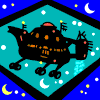

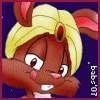



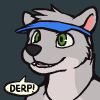
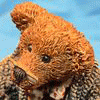
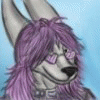
Comments